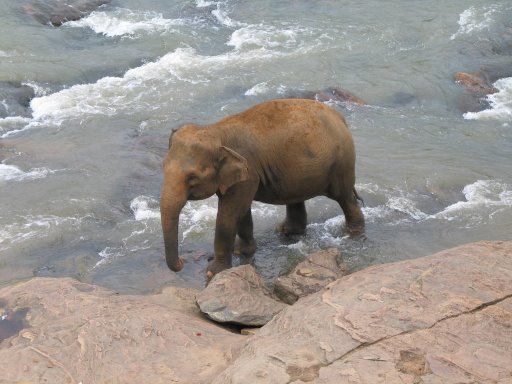Global warming causes changes among different species/ it turns out that as the warming continues, our globe will become the "district of the little ones"

Previously I wrote that The big ones are extinct. Now it turns out that there is probably another disadvantage of a large body.
It turns out that as the warming continues, our globe will become the "region of the small", global warming causes changes among different species, some of the changes are common to most species such as a transition and change in the distribution of species in geographical areas and changes in the schedules of the cycles of migration, germination, spawning, spawning, etc. Other changes caused by global warming are unique to different species such as: the bleaching of coral reefs or the difficulties of polar bears to obtain food.
A change that is now being added is a "reduction" in the font size of animals as a result of the warming, the reduction is seen in both populations and individuals. Zoologists know that in warm areas, animal species have a tendency to reduce their body size and lengthen the "prominent" parts - ears, tail, legs, so according to the relationship between the body and these parts, the geographical origin of an animal could be identified.
Martin Daufresne, a researcher on behalf of the French governmental research institute claims that it is known that "small species "dominate" in warm areas", in the research conducted the researcher intended to check if the aforementioned known relationships will appear as a result of climate change / global warming. According to him "it does work".
According to the research results that are published in the Proceedings of the National Academy of Sciences, the relationship between a warm environment and a small body appears in three biological groups that were tested, the researcher explains that "being small can indicate belonging to a small species or to "young women" or also to "small Relative to age.
The researcher tested species in an aquatic environment: bacteria, phytoplankton and fish, and found that as the temperature increased, the subjects became smaller, fish tested in French rivers showed a decrease of up to 60% in the size of the mature individuals, according to the researcher he does not know what causes the phenomenon and it is possible that there is more than one factor, but according to him this A worldwide phenomenon and the fact that different species are affected in the same way suggests that the main cause is global warming,
Another study conducted in Scotland showed that: sheep are small as the winters in Scotland become mild, i.e. warm. Is this a form of adaptation of animals to climate change? How does the reduction of individuals affect populations? How will the phenomenon affect other species in the same environment? Species that are related in the food chain to the declining species? Since the size of the animal is relative (usually) to its place in the food chain, a larger one is higher in the system, what will happen when the larger one is reduced, where will its place be in the system? These are questions that must be tested and researched.
I will add that evolutionary logic dictates that the stronger the radiation, the larger the body, since the larger the body, the smaller the ratio between its volume and the body's area, that is, relatively less radiation, less radiation = less heat, and hence the advantage for those with a large body in hot areas, which does not exactly correspond to observations or reality.
Perhaps without a direct connection, but, measured observations and studies show that humans are constantly growing (individuals and populations), which means a complete contrast to what is happening around us. Another opportunity to see how far we have moved away from our origins, from nature, from our environment.
Asaf

6 תגובות
What does it matter? When it gets cold they will be big again 🙂
The evolutionary logic that refers to size is related to the protection that size provides - bigger, fewer potential enemies (predators).
The issue of size and radiation as shown here is wrong (at least for warm-blooded animals): as size increases, the ratio between body volume and surface area decreases. As a result, the heat emission per unit body volume decreases. Warm-blooded people (not mentioned in the article) have a problem of heat emission in hot weather conditions (a fact that turns into an advantage in cold weather). Therefore, the African elephant has larger ears than its Indian relative - they are used to emit heat in the warmer weather conditions.
Beyond that, there is not so much a connection between the animal's place in the food chain and its size - most herbivores are larger than their predators.
Humans are less and less affected by the weather outside (air conditioning accompanies most of humanity throughout the day's activities), which explains why humans actually grow (the body experiences lower temperatures most of the day than before - at least in the warmest areas of the world)
It is known that it is difficult for larger animals to get rid of excess heat, so the title is correct. It is strange that this fact is not treated as an explanation for the evidence in the article.
So if we grow from generation to generation, then have we really left natural evolution?
Does it not apply to us?
?¢?›?©?™?• ? ? ?™ ?ž?'?™?Ÿ ?ž?” ?'?¨? ?œ?©?›?œ ?©?œ ?”?™?”?•?“?™? ?'? ?¨?¥ ?œ?”?¦?˜?ž?§ ?›?œ ?›?š. ?–?” ?œ? ?”?˜?œ?•?™?–?™?” ?–?” ?”?—?•? !
? ?• ?©?œ? ..:\